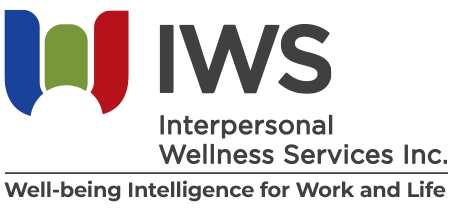Is there room to practice digital etiquette in your personal and professional life?
In an era where our work and social lives are inextricably linked to digital devices, establishing a set of digital etiquette—'netiquette'—is more important than ever. As professionals, we must navigate a fine line between being responsive and being consumed by the constant flow of digital information. This blog delves into the art of using digital devices wisely, ensuring that we honor our relationships with colleagues and subordinates, promote well-being, and in turn, bolster our productivity and professional reputation.
Cultivating Bad Habits that affect well-being
It was a typical afternoon when a friend joined me for lunch. As we sat down, her smartphone found its place on the table. I couldn't help but ask, "Is there an emergency, or is this our special time together?" I shared with her my intention to fully experience our rare moments together, hence I had left my phone in my bag, willing to deal with messages post-lunch.
She paused, a realization dawning upon her. "It's a bad habit," she admitted, "Of course, I want our time to be uninterrupted." With that, she tucked her phone away, and what followed was a lunch filled with laughter and heartfelt conversation, unmarred by the digital world. It was only after we had savored our time together that we reached for our devices, checking for anything urgent that needed scheduling.
The Pivotal Role of Digital Etiquette
Digital etiquette is not just about knowing when to mute your microphone on a video call. It's about fostering a respectful and considerate digital environment. Poor digital habits can lead to misunderstandings, decreased productivity, decrease well-being, and can even strain professional relationships. Conversely, a strong sense of digital etiquette can enhance collaboration and create a more efficient workplace.
Mastering Digital Device Etiquette
Presence Over Pixels: When in meetings, give the human beings in the room your undivided attention. This means phones down, screens off, and focus on the present discussion. It's a simple but powerful way to show respect and value to those you're with.
Time-Blocked Tech: Allocate specific time slots in your day for checking and responding to emails. This helps manage your tasks more effectively and sets clear expectations with your team regarding communication.
Email Etiquette Excellence: Dedicate time to craft thoughtful responses to emails. Avoid the temptation to reply in haste; instead, respond with intention. This approach ensures clarity and reduces the need for follow-up emails.
Selective Social Notifications: Social media can be a vortex of distraction. Be selective about which notifications you allow during work hours to maintain focus on your priorities.
Undivided Attention: In the age of multitasking, giving someone your full attention is a rare and valuable gift. Whether it's a client or a colleague, being fully engaged can lead to more meaningful and productive interactions.
Intentional Internet Interludes: Use your internet time for professional development or research, rather than personal browsing, during work hours. This conscious choice helps you stay on track with your professional goals.
Polished Professional Communication: Digital communication is often the first impression you make. Use clear language, proper grammar, and maintain a professional tone to convey your message effectively.
Striking the Balance Between Connectivity and Productivity
Finding the equilibrium where you can be both accessible and productive is key. Utilize tools like email autoresponders outside of your set 'email hours' to manage expectations and maintain boundaries.
Setting Your Digital Boundaries
It's imperative to create digital boundaries. Define office hours for when you are available for digital communications and when you are not. This not only helps others respect your time but also allows you to recharge, leading to more innovative and focused work when you are on the clock.
Digital etiquette in the workplace is not just about adhering to a set of rules; it's about cultivating a culture of respect and consideration for the time and attention of those around us. By implementing the tips discussed, we can all contribute to a more productive and respectful digital work environment.
This incident with my girlfriend underscored a profound lesson: the importance of distinguishing the urgent from the important. In our hyper-connected lives, it's crucial to honor the human connections right in front of us, giving them the attention they deserve. So next time you're about to place your phone on the table, ask yourself if it's a barrier or a bridge to the connection you wish to have with those around you.
How do you maintain digital etiquette in your professional life? Share your tips and experiences in the comments below or reach out via our contact form. Let's learn from each other and navigate the digital world with grace and professionalism.
To Your Wellness,
Joyce

